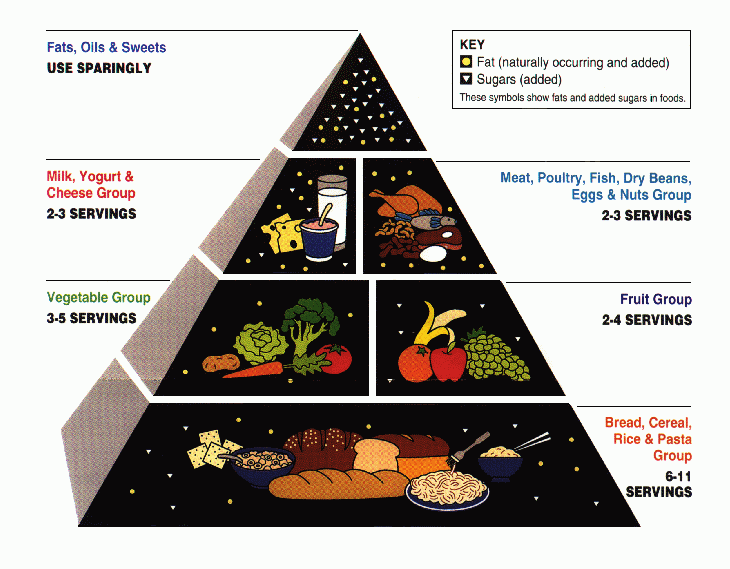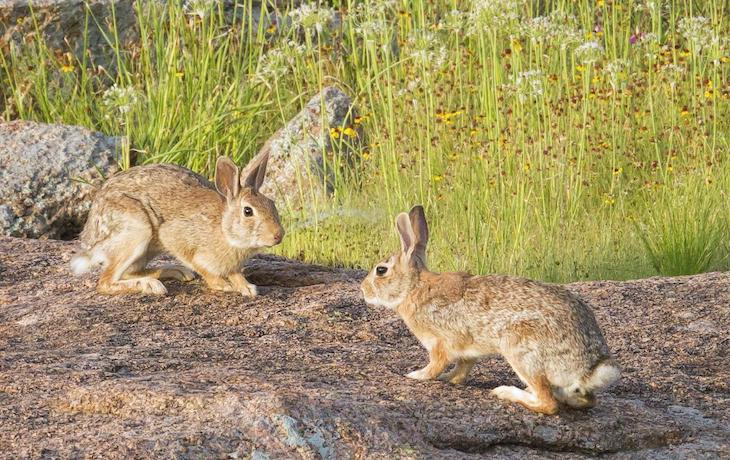“You’ll starve to death if you only eat rabbit meat” is one of those common refrains you learn when getting into survival. It’s a fun fact you might share over a beer or to show off how woodsy you are to your LARPer friends.
And while it’s actually true and worth understanding why, it doesn’t actually happen much anymore — we’ve struggled to find modern documented cases.
This was far more common in the wild frontier days when people were starving for food over the winter, which happens to also be when wild animals are at their leanest because they’ve burned off their fat. These frontiersmen also didn’t understand local vegetation and habitats the way indigenous people did.
Commonly called “rabbit starvation” or “mal de caribou” but officially called “protein poisoning,” it happens when you eat too much protein without enough fat and/or carbohydrates, which leaves your stomach full but your body malnourished. Excessive protein can overwhelm your liver and kidneys, leading to excess ammonia, urea, and amino acids in your blood. It’s a serious condition that can kill you.
It’s similar to hyponatremia “water poisoning,” where people can actually drink themselves to death with water. But the water itself isn’t the problem, it’s the lack of salts/electrolytes to balance out the body’s chemistry.
Summary:
- This can occur with any lean meat, not just rabbit. That could include beef, caribou, chicken, deer, or squirrel.
- Assuming you don’t have a rare genetic/chronic condition, protein poisoning is only a concern in long-term wilderness survival situations where you’re relying on animals to survive.
- If you’re in that situation, eat fats.
- If you harvest an animal, think like an indigenous person and use as many parts as you can, namely the fatty brain and liver. Other “wild” options are fish oils, nuts, and milk.
- Domesticated animals, such as meat rabbits, are usually fatter than their wild counterparts. You could probably survive largely on domesticated rabbits.
- Homesteading animals are helpful too since chickens provide fat in eggs, goats provide fat in milk, etc.
- If building a pantry, be sure to stock some shelf-stable fats like lard or peanut butter.
- The big symptoms are diarrhea, nausea, and an insatiable desire to eat even though you’ve been eating.
- Simply eating some fats will correct the problem within hours, although digestive discomfort might continue for up to a week.
Protein starvation symptoms
- Cravings (often for animal brains and other fatty meat)
- Diarrhea
- Fatigue
- Headaches
- Nausea
- Fatigue
- Moodiness
- Nausea
- Slow heart rate
- Weakness
Diarrhea seems to be the most commonly reported symptom.
In many modern anecdotes, what people thought was rabbit starvation was actually something else. If you only eat the muscular parts of a rabbit, for example, you’re not getting the Vitamin C stored in its organs, which can lead to scurvy.
That’s the trickiest part about diagnosing rabbit starvation. These symptoms are very similar to the symptoms of other common problems people experience in these kinds of austere survival scenarios.
So if you have digestive problems and aren’t sure why:
- If you know you’ve been eating enough but you still feel hungry, that means the food you’ve been taking in isn’t giving you the nutrition you need. Diversify your diet.
- If you know you’ve been drinking enough water (eg. your pee is clear), maybe it’s a lack of salts/nutrition leading to hyponatremia.
- Otherwise, drink more water.
- Consider using the Imodium and/or Pepto-Bismol in your first aid kit. Diarrhea can kill you quickly, especially if you’re in an environment with limited potable water and can’t rehydrate. Imodium will “plug you up” and buy you time to fix the digestive problem without losing more water through the squirts.
Actual cases of rabbit starvation
There aren’t actually that many recorded cases of rabbit starvation or protein poisoning. The earliest is from Appian’s Roman History:
Their soldiers were sick from watching and want of sleep, and because of the unaccustomed food which the country afforded. They had no wine, no salt, no vinegar, no oil, but lived on wheat and barley, and quantities of venison and rabbits’ flesh boiled without salt, which caused dysentery, from which many died.
The SAS Survival Handbook discusses rabbit starvation (emphasis mine) among Hudson Bay Company trappers in the Canadian frontier wilderness:
Rabbits can provide the easiest of meals but their flesh lacks fat and vitamins essential to man. The Hudson Bay Company recorded cases of trappers dying of starvation although eating well on an easily available diet of rabbit. The body uses its own vitamins and minerals to digest the rabbit and these are then passed out in the faeces. If they are not replaced, weakness and other symptoms of vitamin deficiency appear. If more rabbit is eaten, the condition becomes worse. Trappers literally ate themselves to death when eating vegetation would have ensured their survival. This situation often occurs when vegetation has been buried by snow and survivors rely on rabbits for food.
Charles Darwin wrote about mild cases of rabbit starvation in The Voyage of the Beagle:
We were here able to buy some biscuit. I had now been several days without tasting anything besides meat: I did not at all dislike this new regimen; but I felt as if it would only have agreed with me with hard exercise. I have heard that patients in England, when desired to confine themselves exclusively to an animal diet, even with the hope of life before their eyes, have hardly been able to endure it. Yet the Gaucho in the Pampas, for months together, touches nothing but beef. But they eat, I observe, a very large proportion of fat, which is of a less animalized nature; and they particularly dislike dry meat, such as that of the Agouti. Dr. Richardson also, has remarked, “that when people have fed for a long time solely upon lean animal food, the desire for fat becomes so insatiable, that they can consume a large quantity of unmixed and even oily fat without nausea:” this appears to me a curious physiological fact. It is, perhaps, from their meat regimen that the Gauchos, like other carnivorous animals, can abstain long from food. I was told that at Tandeel, some troops voluntarily pursued a party of Indians for three days, without eating or drinking.
Much of what we know of rabbit starvation comes from arctic explorer Vilhjalmur Stefansson, who wrote in Not by Bread Alone in 1946:
The groups that depend on the blubber animals are the most fortunate in the hunting way of life, for they never suffer from fat-hunger. This trouble is worst, so far as North America is concerned, among those forest Indians who depend at times on rabbits, the leanest animal in the North, and who develop the extreme fat-hunger known as rabbit-starvation. Rabbit eaters, if they have no fat from another source—beaver, moose, fish—will develop diarrhea in about a week, with headache, lassitude and vague discomfort. If there are enough rabbits, the people eat till their stomachs are distended; but no matter how much they eat they feel unsatisfied. Some think a man will die sooner if he eats continually of fat-free meat than if he eats nothing, but this is a belief on which sufficient evidence for a decision has not been gathered in the North. Deaths from rabbit-starvation, or from the eating of other skinny meat, are rare; for everyone understands the principle, and any possible preventive steps are naturally taken.
Stefansson lived for years with the Inuit people, admiring their good health and becoming an early proponent of a carnivore diet. Eating nothing but meat and fat was considered barbaric at the time, so Stefansson submitted himself to a year-long study in 1928 in which he ate nothing but meat. He was perfectly fine at the end of the year, minus a calcium deficiency.
At one point, Stefansson intentionally put himself into rabbit starvation, but recovered quickly once he started eating fat again:
At our request he began eating lean meat only, although he had previously noted, in the North, that very lean meat sometimes produced digestive disturbances. On the 3rd day nausea and diarrhea developed. When fat meat was added to the diet, a full recovery was made in 2 days. This disturbance was followed by a period of persistent constipation lasting 10 days.
Explorer and author Farley Mowat experienced rabbit starvation while living among the Ilhalmiut people of Canada. He was cured when his guide had him drink lard.
A possible case of rabbit starvation occurred in the case of Chris McCandless, subject of the book Into the Wild, who was found dead in the wilds of Alaska in 1992. Author Jon Krakauer speculated in the book that McCandless was a victim of protein poisoning.
However, McCandless’s own journal blamed seeds from wild potatoes. His actual cause of death has been hotly debated over the years since wild potato seed wasn’t thought to be poisonous. However, after decades of research, Krakauer now believes that McCandless suffered from paralysis caused by the potato seed, exacerbated by malnutrition. While rabbit starvation may have been a contributing factor, it likely wasn’t the specific cause of death.
A recent case of protein poisoning dates back to 2017 when a 25-year-old Australian bodybuilder died from what basically amounted to an overdose of protein shakes in an attempt to build muscle. However, the culprit was a rare genetic condition called Urea Cycle Disorder that prevented her body from breaking down protein, leading to a buildup of ammonia in her blood. Tragic, but a rare perfect storm of events.
More: Analyzing the gear choices of every Alone winner and runner-up
Jordan Jonas, winner of Alone season 6, and arguably the show’s greatest contestant, lost 30 pounds despite having an impressive assortment of wild food, including an entire moose and 60 pounds of fish. However, he had lost more weight earlier on and had started gaining it back toward the end thanks to consuming moose fat.
We don’t necessarily know if rabbit starvation was the true cause of these documented cases, as other conditions can cause these symptoms. For example, ketogenic diets have been all the rage for years, because when you cut carbs out of your diet, your body burns fat at a high rate. I lost 50 pounds in a summer on keto. And there aren’t a lot of carbs in the wild, so it wouldn’t be a surprise to lose a great deal of weight on a wildcraft diet, even if you were getting enough fat.
Other causes of diarrhea could be bacteria or parasites. Even typically benign, yet unfamiliar, bacteria, could cause problems. Often called “Montezuma’s revenge,” “Nile runs,” or “Delhi belly,” or the more-professional “travelers’ diarrhea.” In other words, you go to a strange place where you aren’t adapted to the local microfauna and you get the squirts. Travelers’ diarrhea could explain why the Roman soldiers caught dysentery despite having access to grains that should have warded off protein poisoning.
Eat fat and don’t solely rely on protein
Based on anecdotes and tradition, the key really seems to be fat intake. Contrary to decades of faulty marketing and dietary advice, you need fat in your diet, as indicated by both tradition and contemporary science. And that’s especially true in survival situations.

If you want to get more precise, your goal is to eat less than 35% of your daily calories from protein — by eating a mix of foods, you’re more likely to get the nutrients you need.
When stocking your survival pantry, think about shelf-stable fats like:
- Cheese wheels
- Coconut milk
- Coconut oil
- Ghee
- Lard
- Olive oil
- Peanut butter
- Sardines in oil
- Shortening
- Tuna in oil
- Vegetable oil
I much prefer animal fats like butter and lard to industrial seed oils, but I still stock several cans of Crisco because it lasts for years.
Also, learn how to make your own lard and tallow to use in cooking. If you homestead, consider raising chickens for eggs, keeping fatty animals like pigs, raising milk animals like goats, and growing fatty plants like sunflowers and nut trees.
Many rabbit breeders doubt that you would suffer rabbit starvation when eating domestic rabbits. Being a rabbit breeder myself, I can tell you from experience that rabbits get fat from commercial rabbit food all too easily. Geneva Mottet, who runs Big Spruce Rabbitry and also teaches physics at the University of Alaska Fairbanks, shows the difference between wild and domestic rabbits. Domestic rabbit is comparable to chicken, with slightly less fat and slightly more protein.
The guy in the video below ate nothing but rabbit for two weeks with no ill effects. He claims to have “debunked” rabbit starvation, but that isn’t true, since there are so many documented cases of it. But it does demonstrate that rabbit starvation only kicks in under extreme circumstances.
What about if you’re in the wild? One trick is to extract every bit of fat from animals you eat. Boil the bones to extract previous fatty marrow in a broth. Eat the internal organs, like the liver, that most of us usually turn our nose up at. A good source of fat is brains, which can be up to 60% fat.
An easier source of fat in the wild is nuts, like acorns. Acorns from white oaks are preferable since they’re lower in tannins that can make you sick. To eat acorns, you need to boil them repeatedly to remove the tannins.


You are reporting the comment """ by on